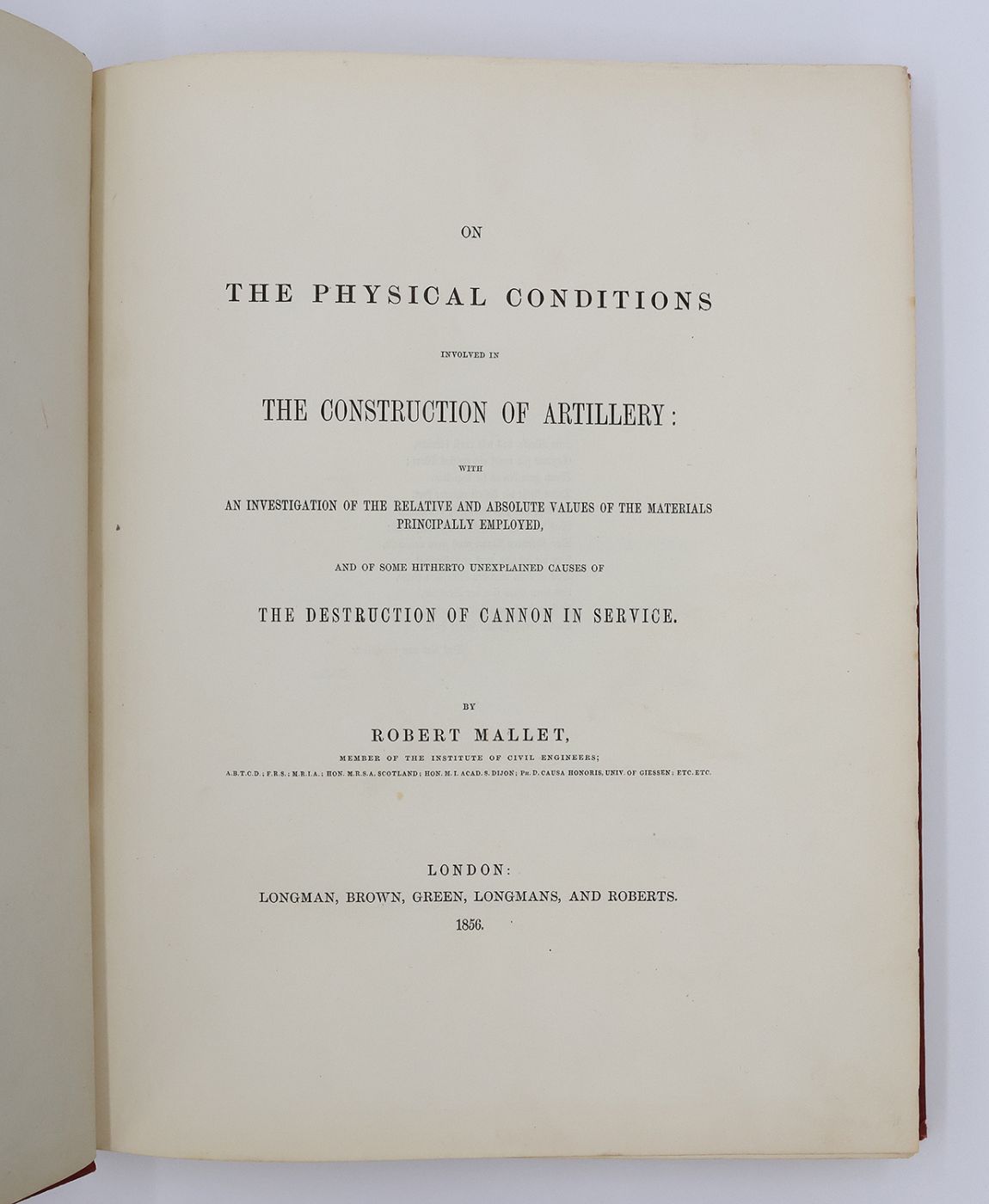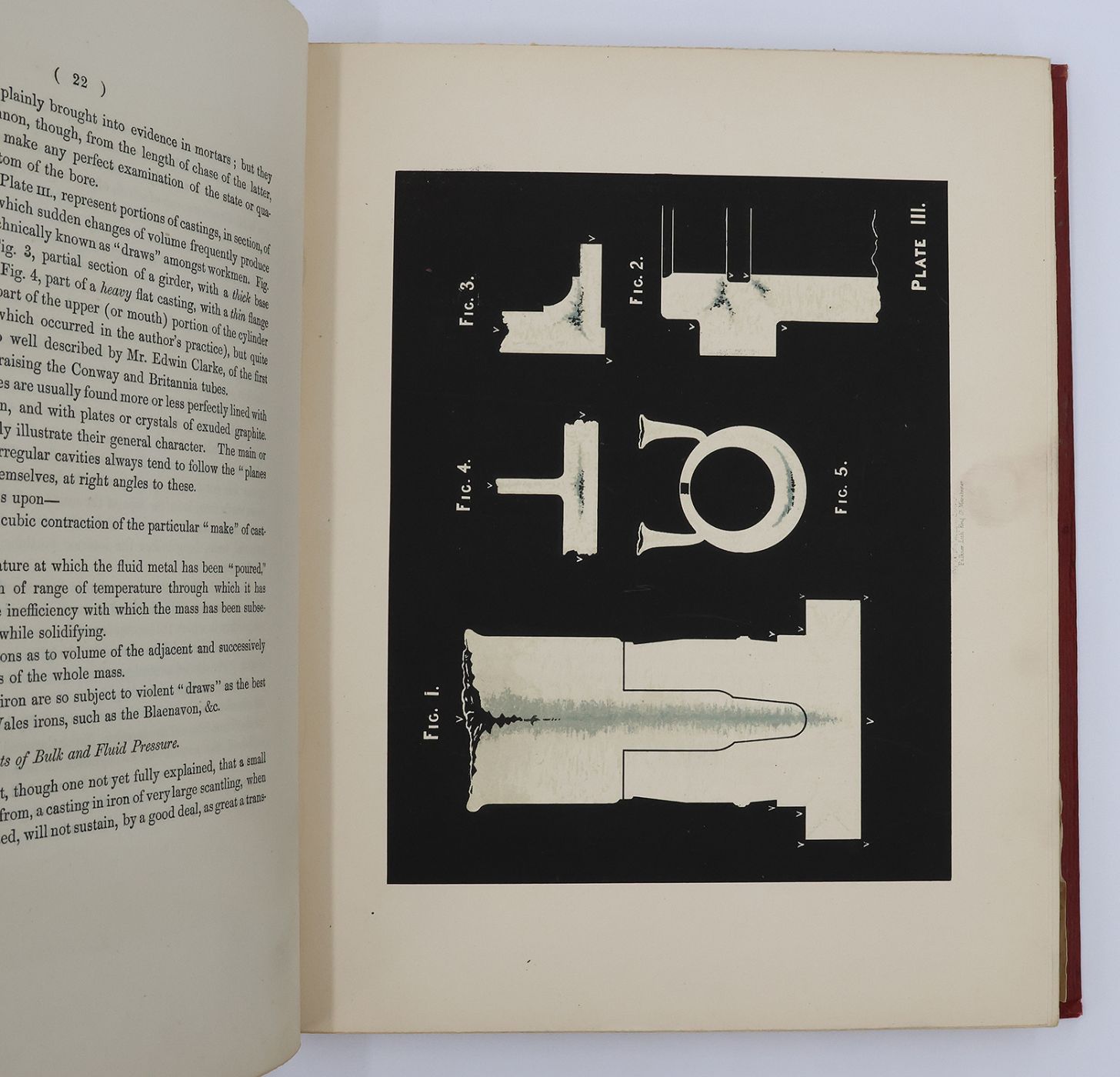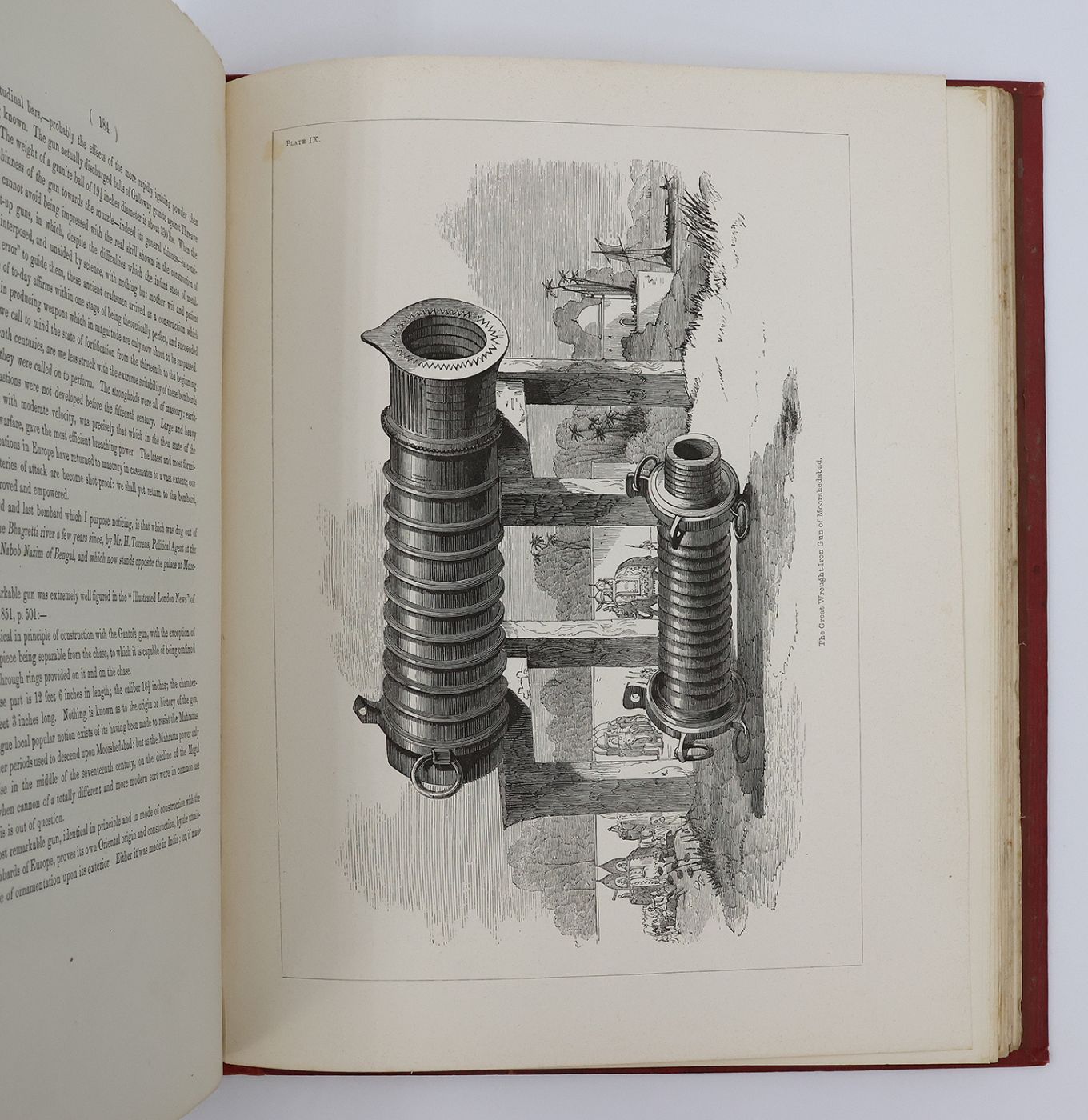ON THE PHYSICAL CONDITIONS INVOLVED IN THE CONSTRUCTION OF ARTILLARY: With an Invstigation of the Relative and Absolute Values of the Materials Principally Employed, and some Hitherto Unexplained Causes of the Destruction of Cannon in Service.
First edition in book form, first printing. Publisher's original red cloth, ornamental borders in blind, circular decoration in gilt to the upper board, titles in gilt to the spine. Quarto. 283pp. Brown coated endpapers. Illustrated with nine full page lithographic plates and 13 diagrams throughout the text. A very good copy, the binding square and firm with some bumping and minor fraying to the extremities, the cloth a little darkened or marked in places. The contents are clean throughout and without inscriptions or stamps. Scarce.
Robert Mallett (1810–1881), civil engineer and scientific investigator, son of John Mallet of Devonshire, who settled in Dublin as an iron, brass, and copper founder, was born in Dublin 3 June 1810. He entered Trinity College in December 1826, graduated B.A. 1830, and M.A. and master in engineering 1862. In 1831 he became a partner in his father's works, assuming the charge of the Victoria foundry, and expanding it into a large concern, which ultimately absorbed all the engineering works of note in Ireland. One of his first undertakings was raising and sustaining the roof of St. George's Church, Dublin, a massive construction weighing 133 tons; for this work he was in 1841 awarded the Walker premium by the Institution of Civil Engineers. For Guinness & Co., the brewers, he bored an artesian well, besides constructing steam barrel-washing machines and large sky coolers. In 1836 he built a number of swivel bridges over the Shannon. In May 1839 he was elected as associate of the Institution of Civil Engineers, and was made a member in 1842. He next turned his attention to the supply of water to Dublin, and surveyed the river Dodder in 1841 at his own expense, with a view to furnishing a supply of pure water, and of procuring water for the paper-mills in summer-time. Between 1845 and 1848 he erected many terminal railway stations, engine sheds, and workshops, besides the Nore viaduct, a bridge 200 feet in span, with girders of 22 feet in depth. The Fastnet Rock lighthouse was built by him in 1848–9. From 1850 to 1856 Mallet worked on the design of heavy guns. With his comprehensive account entitled 'The Physical Conditions Involved in the Construction of Artillery, With an Investigation of the Relative and Absolute Values of the Materials Principally Employed, and of some Hitherto Unexplained Causes of the Destruction of Cannon in Service' (Dublin and London, 1856), he created a basis for later books on ordnance and on casting and founding. He edited the 'Practical Mechanic's Journal,' 1865–9, 4 vols., contributed largely to the 'Engineer,' and gave evidence as a scientific witness in patent cases. The 'Catalogue of Scientific Papers' contains the titles of seventy-four of his papers. He wrote on the action of water on iron, on alloys of copper with tin and zinc, on atmospheric railways, on the application of water power, on fouling of iron ships, on earthquakes, and volcanoes. The Telford medal and premium of the Institution of Civil Engineers was awarded him in 1859, the Cunningham medal of the Royal Irish Academy in 1862, and the Wollaston gold medal of the Geological Society in 1877. He died at Enmore, The Grove, Clapham Road, Surrey, on 5 Nov. 1881. (DNB).
Stock code: 25109
£450
Published:
Category
Non-fictionScience
History / Military





